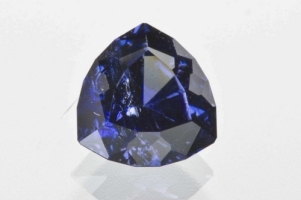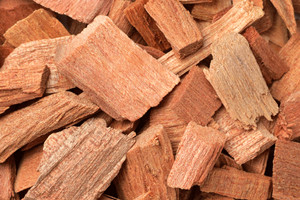Why Ceylon Cinnamon Is So Expensive
Narrator: Ceylon cinnamon is native to just one region of the world, and producing it requires hours of delicate work. Even the most skilled workers can make only a few pounds of quills a day. One pound of cinnamon quills can cost $27, but not all spices labeled cinnamon are the Ceylon variety. Many in the Western market are actually cheaper types of cinnamon called cassia. So what makes Ceylon cinnamon so favorable? And why is it so expensive?
Ceylon cinnamon is named after the old British name for Sri Lanka, and it is often considered “real” cinnamon. It is made from the dried inner bark of a tree called Cinnamomum verum. Growing these trees is an investment. Farmers must wait four years after a tree is planted before they can begin harvesting. At harvest, workers break down the branches early in the morning, when the bark is still moist.
Ruwanpura Sunimal Silva: The earlier we go home, the more time we get to do the peeling. And also, branches will not get dry if you cut them in the morning. If you do it at noon, branches will dry out. Then it is difficult to work with those branches.
Narrator: Ruwanpura must continuously care for the trees throughout the year, otherwise, the branches won’t be suitable for making cinnamon at all.
Ruwanpura Sunimal Silva: If the tender branches are hard and twisted, those branches should be cut down. The branches that are straight and steady should be kept. If the bush is well grown, you can harvest once after 8 months. Otherwise, it’s only one time for a year.
Narrator: The rigorous nature of this job has only just begun. Now peelers must do the delicate and essential work of stripping the inner bark of each branch by hand.
Ruwanpura Sunimal Silva: First, I bring in the cinnamon branches. Then I have to remove the nodes. After removing the nodes, outer skin has to be removed. After that, in the peeling process, the inner bark is treated with this rod, so then, taking off the bark would be easy.
Narrator: This is the most labor-intensive part of the process, and it’s not as easy as simply shaving the outside of the bark as you would the skin from a potato. To produce the most valuable cinnamon, the bark must be made extremely thin. The thinner the quills are, the more costly they will be. Ruwanpura has spent 40 years mastering this skill.
Soon after the bark is removed, each piece dries under the sun and curls up within a few minutes. After drying, the small pieces are stuffed inside a straight piece of bark, forming one 42-inch quill. By the end of a long day, workers will have only produced about 3 pounds of quills. Those then need to dry for three to four days before they’re packed into bales and sent off to a separate facility. That’s where there’ll be graded and officially priced based on their width.
PDRomanis and Sons buys bales of cinnamon from various peelers. At its facility, quills are graded over 10 scales. The most valuable quills are classified as Alba. It takes a peeler four times longer to produce one kilogram of Alba than to produce the same quantity of lower grades.
Jeewani Ukwatta: This is very expensive. You can see that the size of these quills is similar to pencils. In the peeling process, inner bark has to be stripped out 1 inch in width.
Narrator: The leftover, smaller cuts are turned into ground cinnamon and make up the cheapest form. But even the most valuable quills are often confused with a more widely-accessible and cheaper variety of cinnamon.
Jeewani Ukwatta: The biggest competitor for Ceylon cinnamon is the variety called cassia cinnamon, which comes from countries like China, Indonesia, and Vietnam.
Narrator: Cassia comes from another kind of cinnamon tree, called Cinnamomum cassia, and it doesn’t require as much time or effort to make. Cassia bark is hard and sturdy, so quills are made as one curled piece of bark without the fillings. Ceylon cinnamon, on the other hand, is tender and soft and needs those inner layers to prevent the quill from breaking.
Jeewani Ukwatta: Unlike cassia cinnamon, our cinnamon is presented as quills with these fillings. That’s why it has a value.
Narrator: Cassia is very fragrant and brown, whereas real cinnamon is paler, with a milder flavor. Cassia also contains, on average, higher levels of coumarin, an organic compound that can cause liver damage if consumed in large amounts. This is why researchers say Ceylon cinnamon is ultimately the healthier option. But if you’re buying cinnamon in the US, it can be hard to tell the difference between them. Part of the confusion between the two comes from the use of the label cinnamon. In the US, it is legal to label both Ceylon and cassia cinnamon as cinnamon, while in the UK and other countries, cassia must be labeled cassia and cannot be classified simply as cinnamon.
Regardless of what it’s called in the US, consumers worldwide prefer the real thing. In 2018, Ceylon cinnamon accounted for more global revenue than any other variety. But even as demand is expected to grow through 2025, climate change already poses a serious threat to cinnamon production. In recent years, Sri Lanka has experienced droughts over several months. And these long periods of dry weather can kill cinnamon trees, which need marshy, wet soil to survive.
There’s also a shortage of cinnamon peelers, another threat to production that’s likely to drive up prices. This industry relies on experienced peelers who can practice the difficult work of making these quills over many years.
Upul Weerakkody: The biggest issue I see is that the younger generation is not interested in this. It is the same case even with my own children. They have not even stepped into this planation. For these whole 18 years, they have not even come into this land, and they show no interest in this. I see that uncertain future. For the time being, I will do my best. That’s all.















